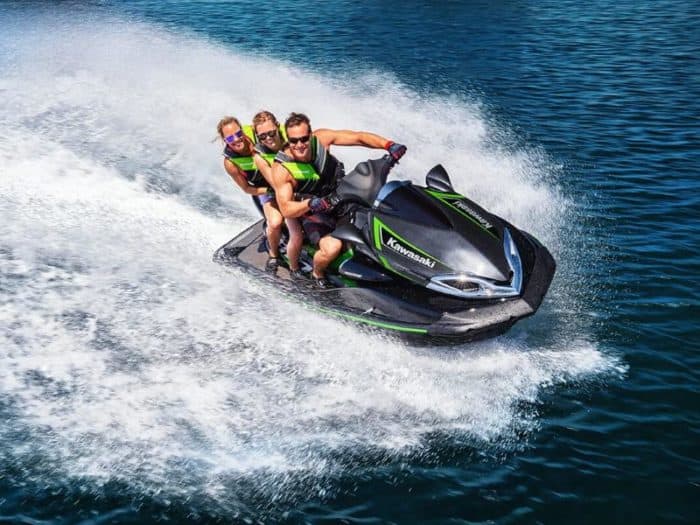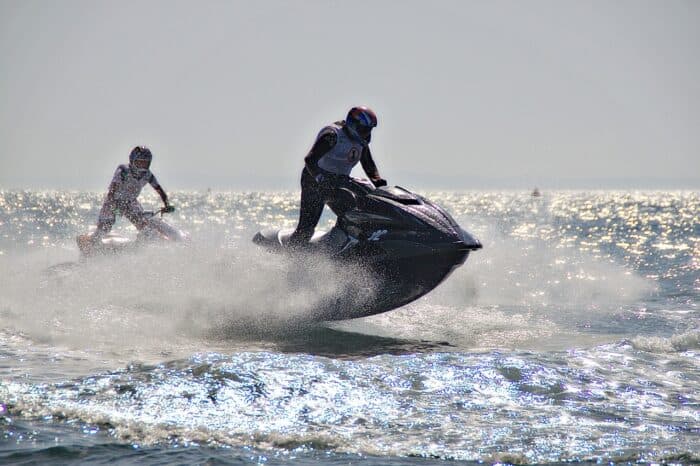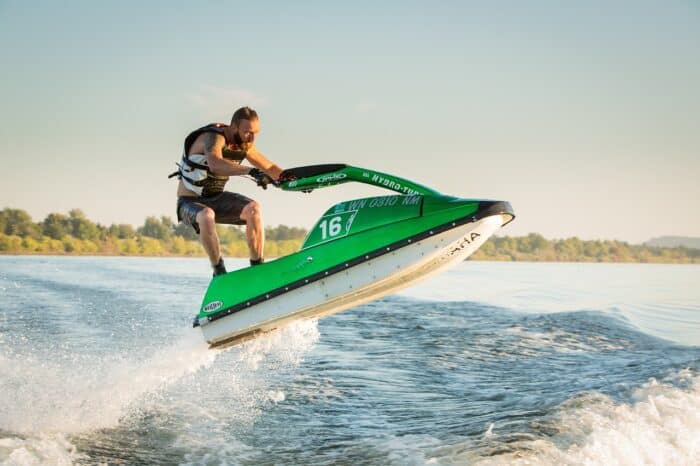What is the Risk When a PWC Passes Too Closely Behind Another Boat?
Operating a PWC (Personal Water Craft) too closely behind another boat poses significant risks for both visibility and safety. The larger vessel in front can obscure the PWC from the view of oncoming traffic, effectively placing it in a dangerous blind spot. This limited visibility not only affects the PWC operator’s ability to see other oncoming vessels but also hampers the oncoming boats’ ability to spot the PWC. Such conditions dramatically increase the likelihood of a serious collision.”
What is the Risk From Oncoming Boats?
Let’s say you’re coming up on the starboard side of a sailboat on your jet ski, and you plan to pass behind the bigger boat. If you are coming in too fast and at the wrong angle, the operator of the larger boat may not see you coming if they do not have a proper lookout. You think that’s not a big deal because you’re passing behind. But the sailboat could now be creating a blind spot for you and oncoming vessels like a fishing boat passing on the sailboat’s port side. You can’t see the fishing boat and that oncoming fishing boat cannot see you.
As you pass behind the sailboat, the fishing boat passed to port and it could easily collide with you since neither of you was aware of the other. Even a mid-sized fishing boat or other vessel is going to be much larger and much heavier than you on a personal watercraft. Using common sense to avoid collision is key.
Some large pontoons can weigh between 4,000 and 6,000 lbs. A bowrider fishing boat might weigh 3,000 lbs. Sailboats can weigh between 5,000 and 10,000 lbs or more. Now compare that to some small Sea Doos which might only weigh just over 400 lbs and, at most, up to maybe 900 lbs for larger models. Any larger sized boat could cause serious damage to a jet ski. And that doesn’t even include the increased risk of personal injury due to the lack of any protection afforded to you on a jet ski.
How Close Behind a Boat is the Blind Spot
The best thing you can do in your PWC is avoid the blind spots of other vessels at all times by making sure you leave a buffer zone around other vessels when you’re operating your PWC. The blind spot that any boat may cast is dependent on the size of that boat, of course. If you pass behind a canoe, odds are an oncoming boater will be very much able to see you coming. But if you’re passing behind a houseboat, then perhaps even someone operating a large yacht wouldn’t be high enough up to notice you back there, and even then you’d disappear from sight at some point.
A good rule of thumb for your safety and the safety of others is to give yourself 200 feet of space at all times between you and any other vessels on the water.
What About Using PWCs in Groups?
Even if you’re out boating with friends, it’s a good idea to give yourself this kind of room when you’re operating your vessels. Think of it this way. If you are with three other boaters and you’re all riding PWCs and having fun. If you are in a tight group and you pass too close to another boat, even if an oncoming vessel sees one or some of you coming, they may not see all of you. The sound of your motors will likely blur together, making it difficult for even an observant boater to notice how many of you are out there if you are too close to each other and another boat.
What About Wake Jumping?
Some PWC operators want to pass close behind a larger, faster vessel so they can jump the wake and do tricks. I get the temptation because it looks like a lot of fun but a couple of things are worth remembering. First, this has caused a ton of accidents because, unless you actually do stunt riding as a hobby, the risk of losing control, falling off or flipping the PWC is very real. Second, in most bodies of water this is actually prohibited and you can end up getting fined or worse if you’re not careful. Given the risk of injury to you and others, potential damage to your PWC and other boats, and the potential legal punishments you might face, there is just too big a risk for passing behind another boat to do this.
The Bottom Line
When you pass too closely behind another boat in your PWC you are leaving yourself open to getting into a serious accident as a result of putting yourself in a blind spot. Oncoming boats cannot see you, nor can you see them. Additionally, if you’re traveling in groups or trying to do tricks on another boat’s wake, you’re also running the risk of injury, damage and even legal repercussions. Do your best to leave about 200 feet of space between your PWC and other boats at all times.
Categories: Boats, Personal Watercraft















